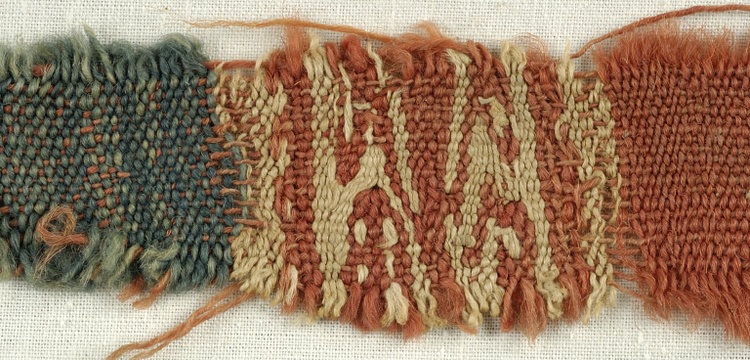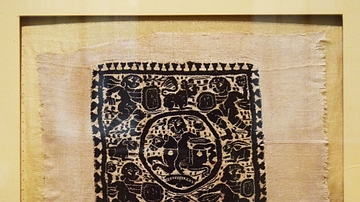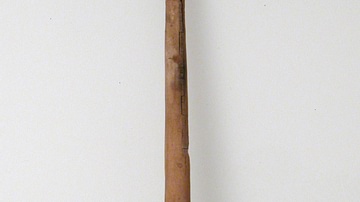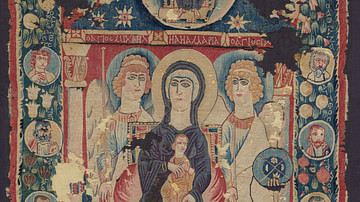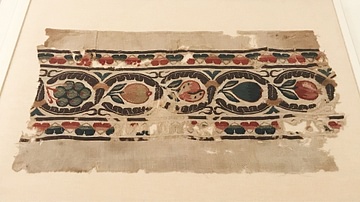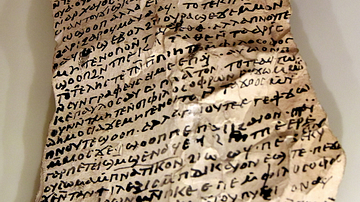Illustration
This colourful fragment of a tabby weave is an example of Coptic art. While linen was the preferred textile of ancient Egypt, wool became increasingly important during the Ptolemaic and Roman periods. By Late Antiquity, woolen garments had a ubiquitous role in Egyptian fashion. The clothing of Medieval Egypt was quite colourful, as textiles were often dyed bright colours such as red, blue, green, and yellow.
The fragment is from the 5th-6th Century CE, a time when Egypt was a part of the Byzantine Empire.
The fragment is part of the collection of the Brooklyn Museum.
Cite This Work
APA Style
Museum, B. (2018, August 29). Detail of Coptic Wool Textile. World History Encyclopedia. Retrieved from https://www.worldhistory.org/image/9083/detail-of-coptic-wool-textile/
Chicago Style
Museum, Brooklyn. "Detail of Coptic Wool Textile." World History Encyclopedia. Last modified August 29, 2018. https://www.worldhistory.org/image/9083/detail-of-coptic-wool-textile/.
MLA Style
Museum, Brooklyn. "Detail of Coptic Wool Textile." World History Encyclopedia. World History Encyclopedia, 29 Aug 2018, https://www.worldhistory.org/image/9083/detail-of-coptic-wool-textile/. Web. 27 Jun 2025.
